Random Qs & Observations about growing Healthy Roses
3 years ago
Featured Answer
Sort by:Oldest
Comments (138)
Related Discussions
An observation on the cycles and stages of roses
Comments (12)Congratulations, campanula. One thing is certain, your grandchild will never have a boring grandmother - I think you'll make many wonderful memories for her/him. I can already see a little person with his own tiny plot in granny's allotment. Sherry, I think you've wonderfully described the roller coaster nature of gardening. Recent experience: Great joy in the morning when Mme. Lambard, that I've been babying for ages with little success, is putting out lovely little new leaves and I can finally say it's going to be okay. In the late afternoon I'm as close to tears as I've ever been about a rose when I see that rabbits have almost completely denuded said rose. It now sits behind a barrier at least a foot high of viciously thorned rose canes that I cut off neighboring Glamis Castle that I've grown to dislike. There are a hundred examples such as you've named where we don't know what to do or how to feel because the darned things are not behaving as WE want. Celine Forestier is almost completely denuded of leaves and Reve d'Or ain't far behind. Souvenir d'un Ami on the other hand looked more beautiful than I'd ever seen it last week and now is merely okay. Can't even look at the back garden because every $#@^% band/small rose is surrounded by a circle of thorns. Marie van Houtte is a big (actually small) nothing after three years in the ground and will have to be moved. The SdlM in that area is a stick with five leaves. Thank goodness the one on the other side of the house is growing and blooming nicely. I can't call the garden a success or a failure at any time because it always seems to be both. As I keep discarding roses (giving them to a friend who's starting her own rose garden from my rejects), the prospect of having a mature rose garden retreats further and further into the future. The successes (or possible future successes) are always enough to keep me hooked on this game that I suspect I'm never going to win. And yet, and yet, there are days or moments (not so much at this time of the year but still remembered from last spring) when there is such beauty and perfection that it takes my breath away. Even now after the sun has gone down and the waning daylight is kind to all the imperfections, I feel so blessed and proud that this is my garden, that this is all perfect even with its many imperfections. The roses have their own lives to live and they get on with it according to their own timetables and needs; my wishes sometimes fall in with theirs and they'll allow me to guide them a little too, but often I'm just a lucky bystander who witnesses the process - and thinks it's wonderful....See MoreNewbie qs about clumps, clover, etc.
Comments (3)Depending on where you are in Indiana your soil will be either clay or sand. Clover can be good in the lawn since it can fix Nitrogen and it will add organic matter which will benefit the grass you are trying to grow. Black Medic, also a legume that fixes Nitrogen, seems to grow better in compacted soils then clover will, and adding organic matter to that soil, which helps with soil compaction, seems to help eliminate this "weed". Since turf grasses much prefer a soil with a pH in the 6.2 to 6.8 range a soil test for soil pH and major nutrients is necessary to start. In addition these simple soil tests might be of some use. 1) Soil test for organic matter. From that soil sample put enough of the rest to make a 4 inch level in a clear 1 quart jar, with a tight fitting lid. Fill that jar with water and replace the lid, tightly. Shake the jar vigorously and then let it stand for 24 hours. Your soil will settle out according to soil particle size and weight. For example, a good loam will have about 1-3/4 inch (about 45%) of sand on the bottom. about 1 inch (about 25%) of silt next, about 1 inch (25%) of clay above that, and about 1/4 inch (about 5%) of organic matter on the top. 2) Drainage. Dig a hole 1 foot square and 1 foot deep and fill that with water. After that water drains away refill the hole with more water and time how long it takes that to drain away. Anything less than 2 hours and your soil drainsâ too quickly and needs more organic matter to slow that drainage down. Anything over 6 hours and the soil drains too slowly and needs lots of organic matter to speed it up. 3) Tilth. Take a handful of your slightly damp soil and squeeze it tightly. When the pressure is released the soil should hold together in that clump, but when poked with a finger that clump should fall apart. 4) Smell. What does your soil smell like? A pleasant, rich earthy odor? Putrid, offensive, repugnant odor? The more organic matter in your soil the more active the soil bacteria will be and the nicer your soil will smell. 5) Life. How many earthworms per shovel full were there? 5 or more indicates a pretty healthy soil. Fewer than 5, according to the Natural Resources Conservation Service, indicates a soil that is not healthy....See More10/27/15: Tips & recipes & thoughts to healthy life and healthy roses
Comments (63)JESS: Thank you for the pics. & neat info. about Badger .. I really enjoy learning about the animals in South Africa. One cup of chicken manure per bush is TOO MUCH. In a British rose forum, a lady burnt her roses by using chicken manure once a month. In my cold zone, I use chicken manure VERY SMALL amount when the temp is cool & rainy. Folks use Rose-Tone (has chicken manure) once a month for roses in pots. But that has only 1/6 chicken manure. I would use only 1/2 cup, 1 cup would be too salty. I killed a rose by mixing 1/2 cup of chicken manure in the planting hole. When chicken manure touches the root, it kills the root, best to dilute ONLY 1/2 cup with soil before spreading around the bush. I started a new thread, "10/30/15: Bad habits, good habits, rose & health tips, recipes." http://forums.gardenweb.com/discussions/3473294/m=3/10-30-15-bad-habits-good-habits-rose-and-health-tips-recipes...See MorePre-winter journal: roses' and our health & observation & wish-list
Comments (58)Cup_shaped roses is Niels in Denmark. He grows 400+ roses, zone 5b, acidic clay: http://forums2.gardenweb.com/discussions/1719734/lifespan-of-a-grafted-rose cupshaped_roses(6) In my experience bareroot (grafted) modern roses .., have a few years where they look really great ...then they seem to decline - almost grow backwards - and I end up replacing them with new plants. It may however be a matter of rootstocks? Up until the 1980es - R. Canina species was most often used as rootstocks over here - (Rose Canina Pfanders in Germany - Rosa Canina Laxa in milder/warmer areas - like France and England - but most use R. Multiflora today.cupshaped_roses(6) **** In the above thread, Roseseek (Kim Rupert) reported Grafted-on-Dr.Huey can survive 30 years in dry California. Also Seil in sandy soil, zone 6a, reported grafted-on-Dr.Huey being 50 years old in her mother's garden. Nearby alkaline clay rose-park, zone 5a: they replace their Austins (grafted on Dr.Huey) every 2 to 4 years. Their longest grafted-rose is Double Delight, more than 5 years old. Dr.Huey rootstock, being drought-tolerant, can't handle soaking wet clay that turns into freezing ice in zone 5a winter. But grafted-on-Dr. Huey lives long in dry-climate like California, or in loamy/sandy soil like Seil's in Michigan. From Heirloom roses: "The place where the bud has been added, called the crown or bud-union, is a weak area on the plant. A hard, freezing winter can easily damage the crown, leaving only the rootstock to grow. " trospero(8) Paul Barden This is why I despise 'Dr. Huey' as a rootstock. You can be guaranteed that at some point in the life of the rose, 'Dr. Huey' will send up suckers that you will never, ever be able to stop. This is just what it does. The joke around here is that it is everybody's favorite rose because in May, there is no other rose you will see more blooming plants of than 'Dr. Huey' trospero(8) **** Agree with Paul Barden on Dr. Huey. In my Chicagoland, all the neighbors' roses which are grafted on Dr.Huey: either they die, or roostock take-over and become 10 feet tall rambling-eye-sores. For that reason, I post-pone getting some Austins until they are offered as own-root. bigtruckerdave(7 NC)April 7, 2013: Today I found enormous suckers growing about 3 feet from where I removed 2 Alba Maximas in the spring of 2012. And they were grafted on Dr Huey. jerijen(Zone 10) I haven't had Dr. Huey sucker in quite that manner -- but I have seen Dr. Huey suckers pop up about 6 ins. out from the bud union. What I HAVE had sucker that far away from the plant is Multiflora rootstock. Those ALL suckered rampantly here -- http://forums2.gardenweb.com/discussions/1621052/dr-huey-rootstock?n=7...See More- 3 years agolast modified: 3 years ago
- 3 years agolast modified: 3 years ago
- 3 years ago
- 3 years ago
- 3 years ago
- 3 years ago
- 3 years agolast modified: 3 years ago
- 3 years ago
- 3 years ago
- 3 years ago
- 3 years ago
- 3 years ago
Related Stories

GARDENING GUIDESNew Ways to Think About All That Mulch in the Garden
Before you go making a mountain out of a mulch hill, learn the facts about what your plants and soil really want
Full Story
GARDENING AND LANDSCAPINGGrow a Lush Privacy Screen
No need to wait forever for patio privacy the green way. These 10 ideas will get your screening up and running in no time
Full Story
HOUSEPLANTS8 Essentials for Healthy Indoor Plants
Houseplants add so much to our homes — and can thrive when grown in the right conditions. Keep these tips in mind
Full Story
PETSSo You're Thinking About Getting a Dog
Prepare yourself for the realities of training, cost and the impact that lovable pooch might have on your house
Full Story
FUN HOUZZGuessing Game: What Might Our Living Rooms Say About Us?
Take a shot on your own or go straight to just-for-fun speculations about whose homes these could be
Full Story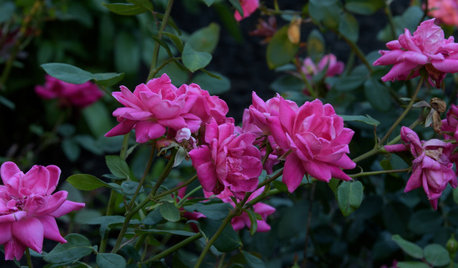
WINTER GARDENINGHow to Plant Bare-Root Roses
Late winter or early spring is a great time to put new roses into the ground
Full Story
FUN HOUZZEverything I Need to Know About Decorating I Learned from Downton Abbey
Mind your manors with these 10 decorating tips from the PBS series, returning on January 5
Full Story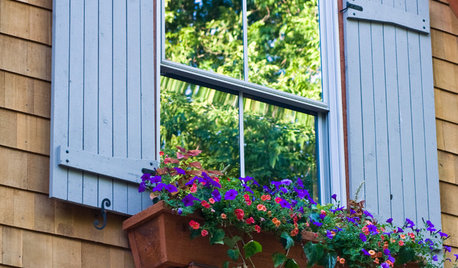
CURB APPEALHow to Make a Window Garden Grow
Get the scoop on materials, installation, plantings and more to bring the charming look of window boxes to your home
Full Story
GARDENING GUIDESCommon Myths That May Be Hurting Your Garden
Discover the truth about fertilizer, soil, staking and more to keep your plants healthy and happy
Full Story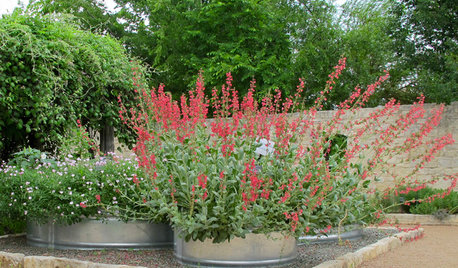
GARDENING GUIDESYou Can Make Space for Native Plants in Any Landscape
Using native species brings ‘terroir,’ or local flavor, to your garden and contributes to healthy wildlife relationships
Full Story


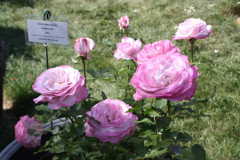
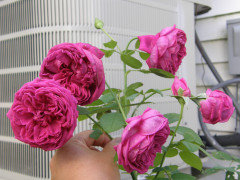
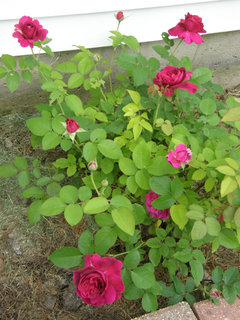
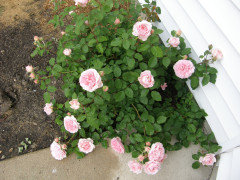
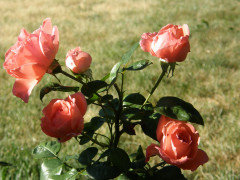



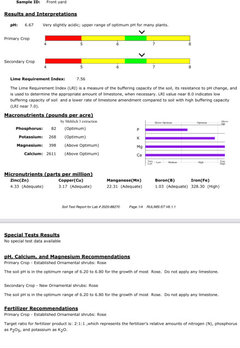

Sheila z8a Rogue Valley OR